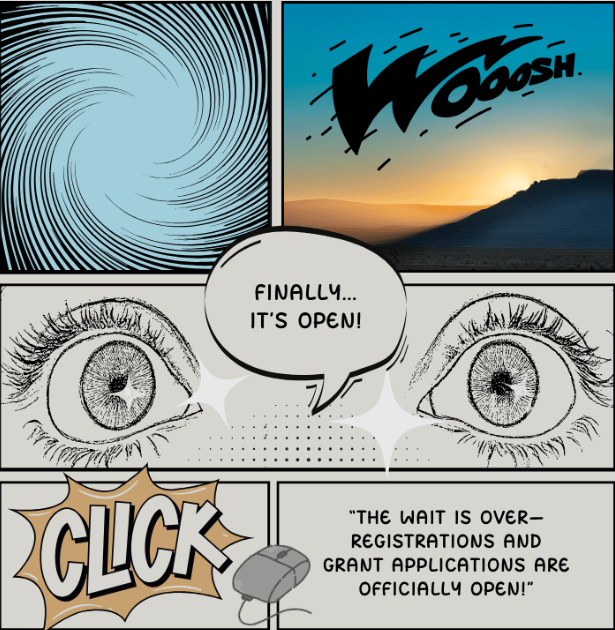
Every year, a vast open stretch of Karoo desert becomes a blank canvas for our wildest creative imaginings. The result is a burst of beauty, colour, fantasy, dreams, noise, and pure joy.
This is Tankwa Town, a temporary city created by radical self-expression, creativity, and communal effort. Everyone is invited to create.
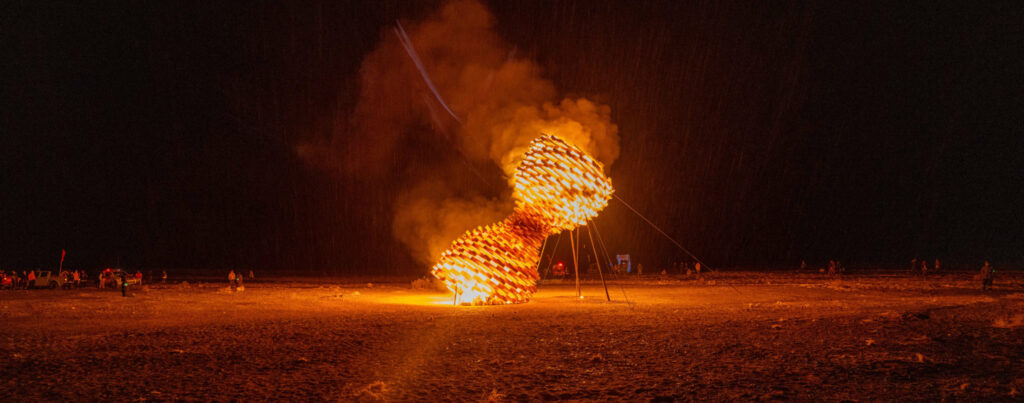
Time To by Elparo, Photo by Richard Ahlstrom
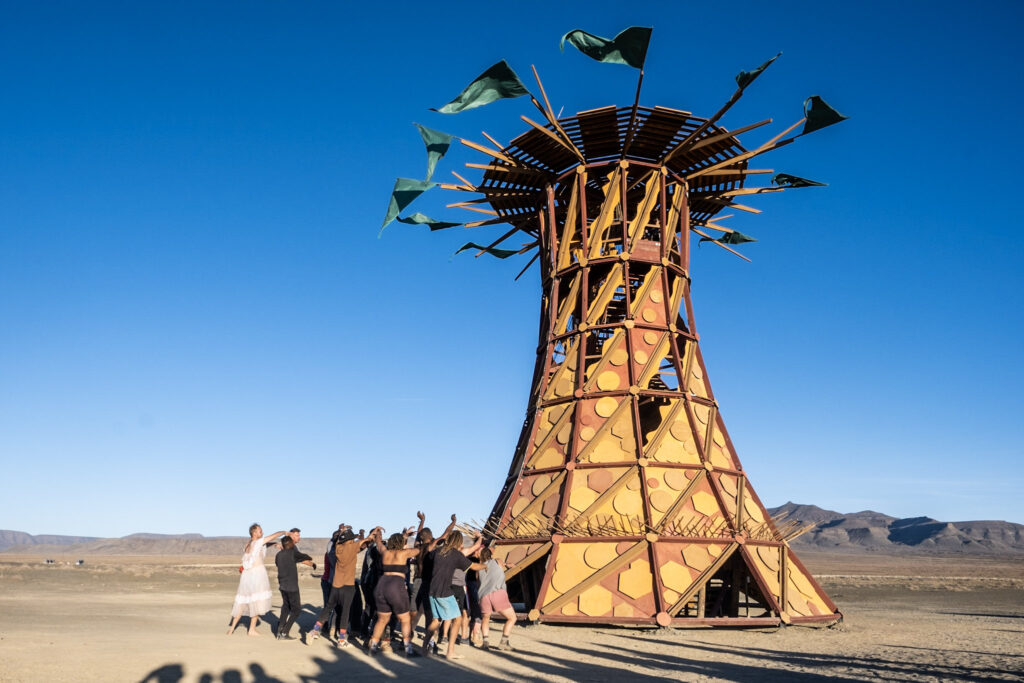
Art: Tree of Stories, Photo by Alastair Mclachlan
Anything’s possible on the flat dusty plain of Tankwa Town – all it takes is an idea!
Do you have something in mind?
Anyone wanting to create art at Tankwa Town must take responsibility for all aspects of it. This starts by reading all the information available, and making the commitment to go ahead with it or not. The second thing is everything else!
This timeline was built assuming that you start your project registration process in October. But it’s perfectly ok to start later than that, just that there might be some limitations to your project, and you will be filling in all the forms in one sitting; and eventually after a certain point, you don’t need to fill in any forms anymore, you bring your thing and register it on site at the Arteria.
September
Expression of Creative Intent and Grant Applications Open
October
24 October Midnight – Creative Grant Applications Deadline
November
Grant Assessment. Open Assessment is early November.
December
Grant Outcomes. Mid December: AfrikaBurn end of the year leave
January
Project Details and Updates: The M.A.K.E. Form
February
End of Feb: Deadline for Fire, Sound, Lights and other Activations. And Structural Safety .
March
First week of March: Deadline for Placement and WTF. Everybody’s working hard
April
Panicking & working harder. Prep, Pack & Panic. End April: Event.
May
Joyous Time. Clean up, Pack Up, Go. End of May: Grant Reconciliations.
There isn’t a deadline to register artworks, performances and Binnekring events. But there are deadlines for everything else – If you miss them, it doesn’t mean that you’re not allowed to bring art to AfrikaBurn – it just means that you’ll not be allowed to burn your piece or have a loud sound installation; you won’t have a pre-allocated space, and you will not be included in the WTF Guide.
But … you can still bring your project to Tankwa Town and have lots of fun!
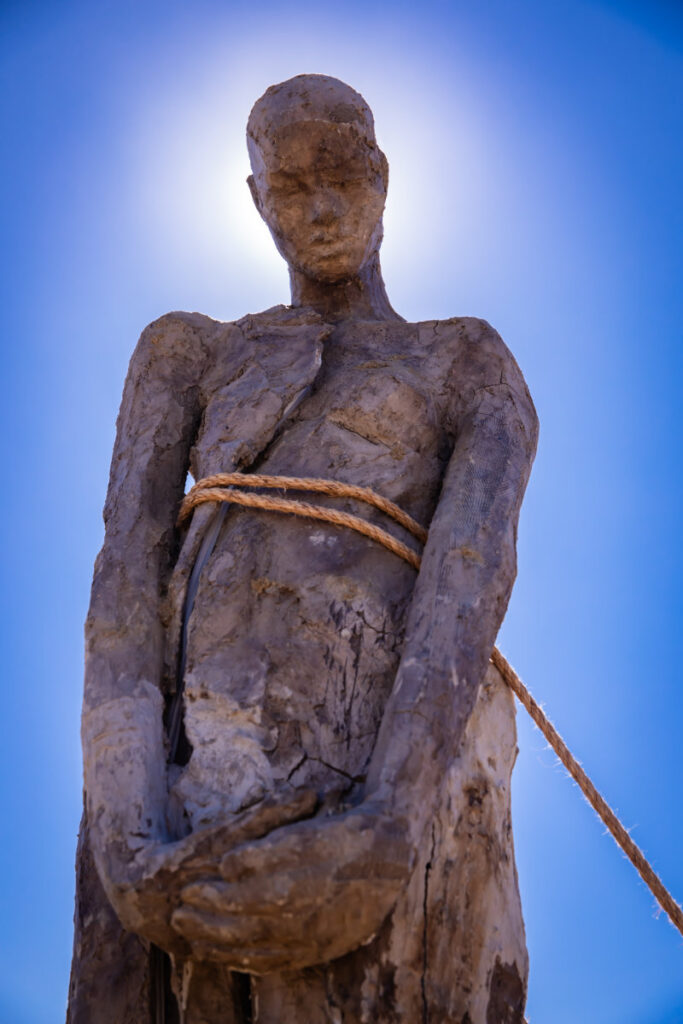
At AfrikaBurn, creative projects fall into three main types: creative arts, mutant vehicles, and theme camps. Each has its own unique needs, processes, and timelines, so it’s important to know which path your project belongs to.
Theme camps are the backbone of Tankwa Town—living spaces that embody collaboration and community—while mutant vehicles are artworks on wheels, roaming masterpieces that bring movement and magic to the desert. Both are considered art projects in their own right, though with specific characteristics that set them apart.
All other creative expressions that don’t involve a tent or an engine on wheels are classified as art projects. From strings of balloons to giant T-Rex sculptures, from sunrise didgeridoo solos to khoi storytelling, from a titties parade to a 74-piece symphony orchestra—these are all art projects. Whether intimate or monumental, playful or profound, they are the heartbeat of Tankwa’s creative landscape.
Below: Babayaya, Tiny Tim, Twisted Davinci, Naked Spectrum
Resources: Fossil Clan, The Fallen Star
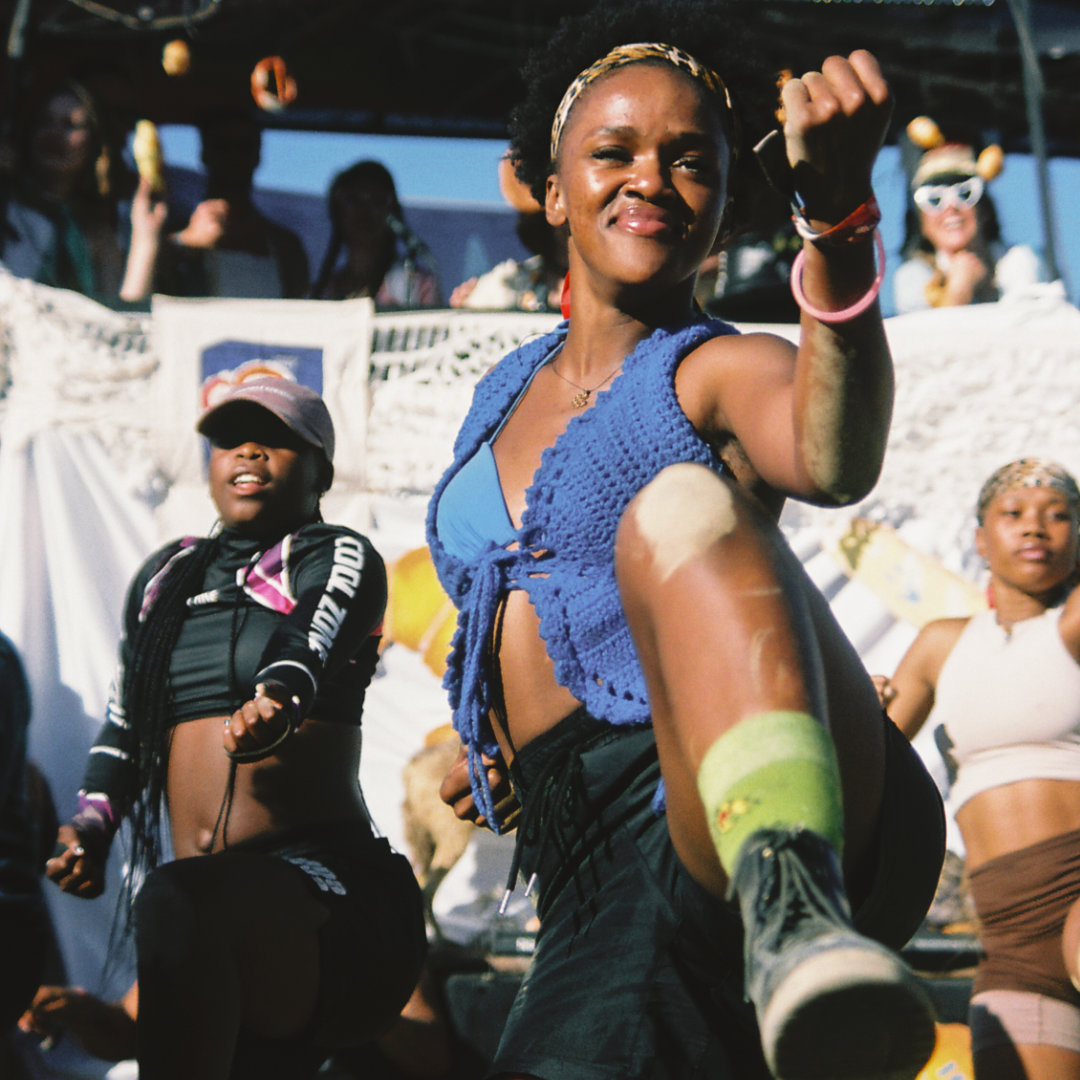
A creative work that is made of human movement and is not a physical object. Think about music, dance, circus, storytelling, theater and magic.
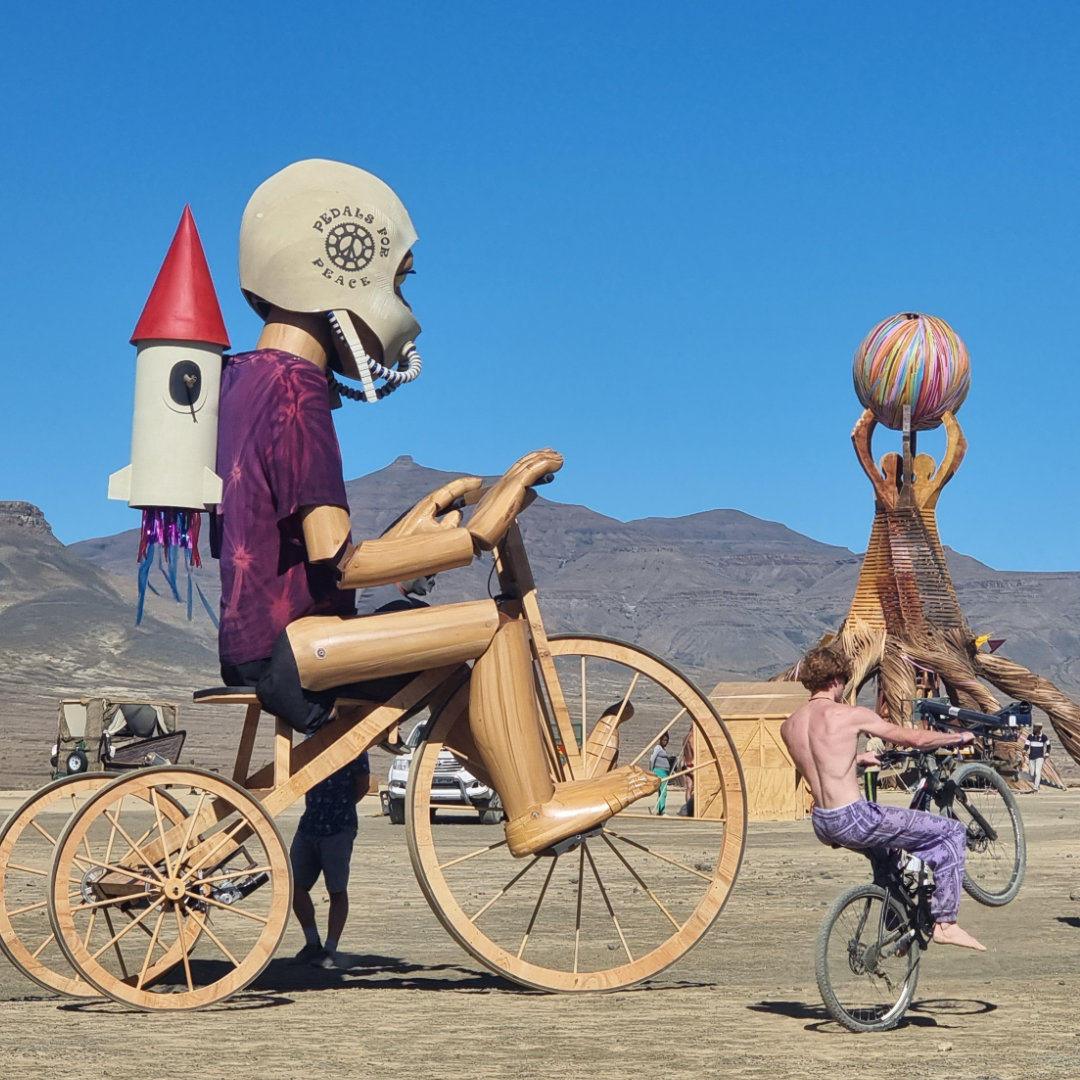
Structures or artworks that are not attached to one place, but come to life on the Binnekring. Think about kites, puppets and giant articulated dinosaurs.
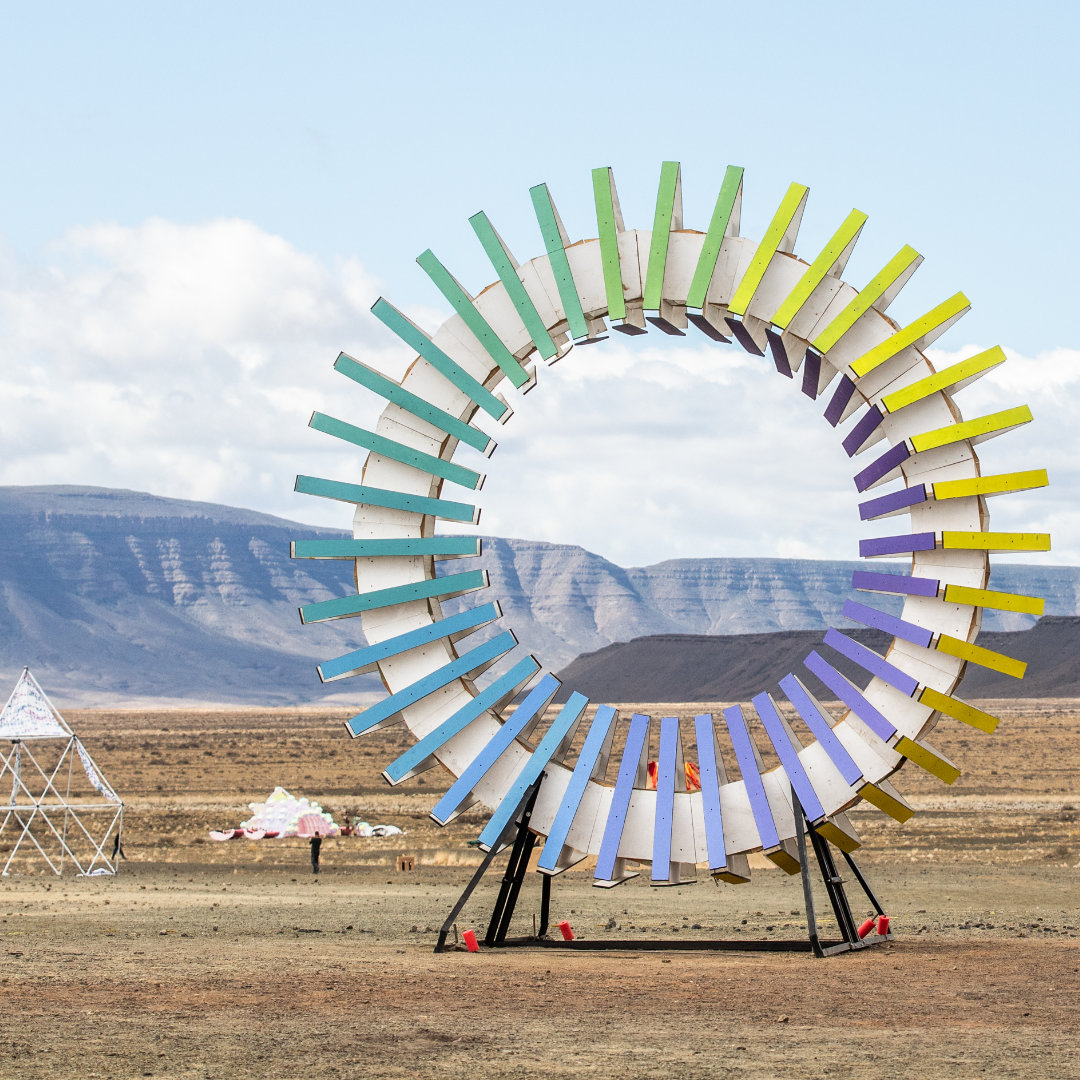
Artworks are stand-alone physical structures that are built and placed on the Binnekring. They may burn or not, they may have sound or not, they may have a specific place ... or not.
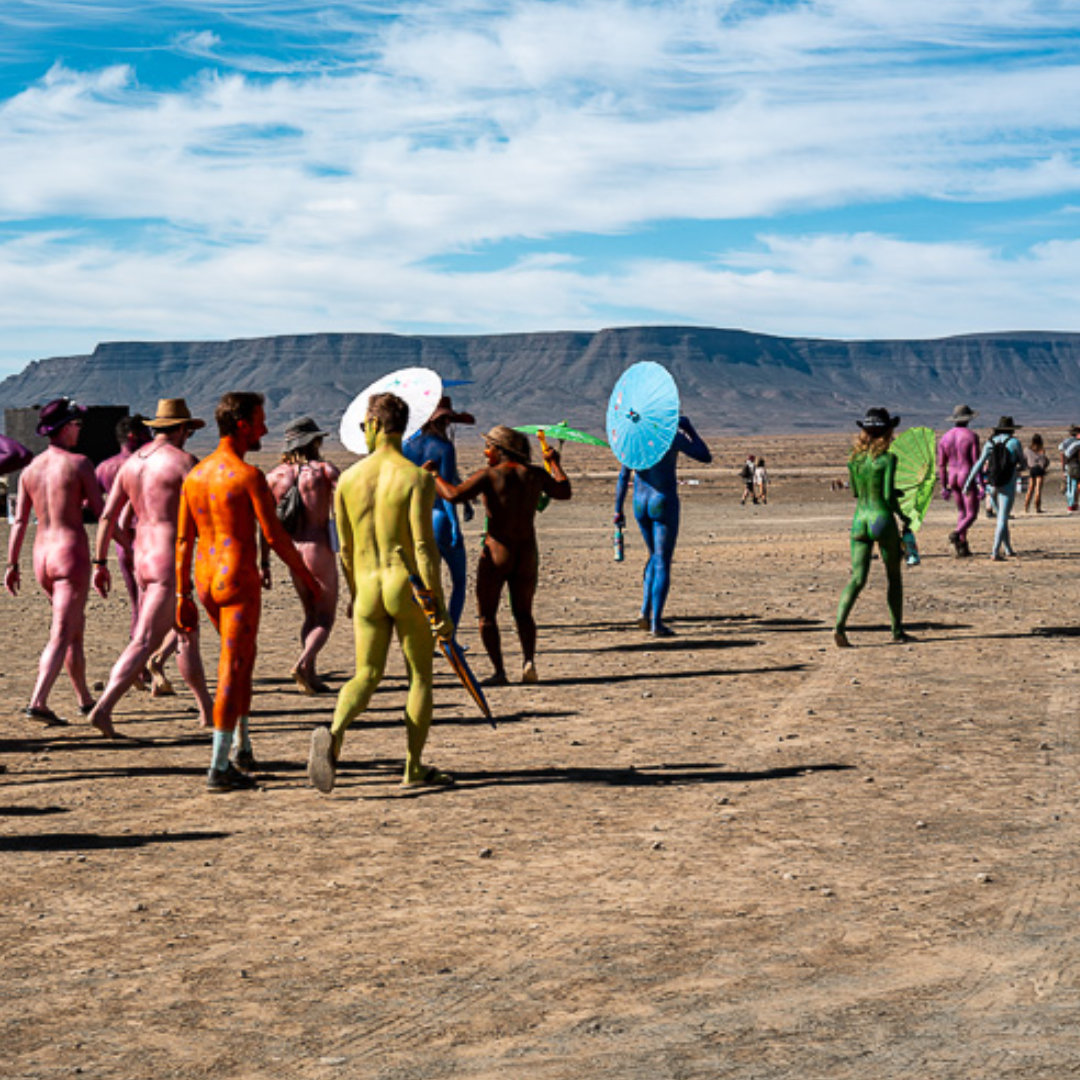
Something that happens in the Binnekring. Anything semi-organised that requires intention, but not necessarily preparation. Think about walks, parades, runs, pop-ups and participation.
Art Projects are never just art or just projects—in Tankwa Town, they are sort of an exponential multiplication of their parts.
Elements like structure, movement, light, voice, fire, sound, narrative, colour, smell, and others can be added, subtracted, multiplied, or divided in countless combinations, creating unexpected results that somehow share a common denominator of safety, while being factored by logistics, and raised to the power of awe-inspiring beauty and joy.
And then some fly, and some others are made of human experience – What’s the load-bearing of that? Is it toxic, or can it burn?
Artworks are stand-alone physical structures built and placed on the Binnekring (or not).(e.g.: art sculptures, phone booths, confession booths, kissing chairs in or outside booths, a beach scene with an umbrella, etc.)
They may burn or not.
They may have sound or not.
They may have a specific place or not.
Artworks that move, we call them roving artworks.
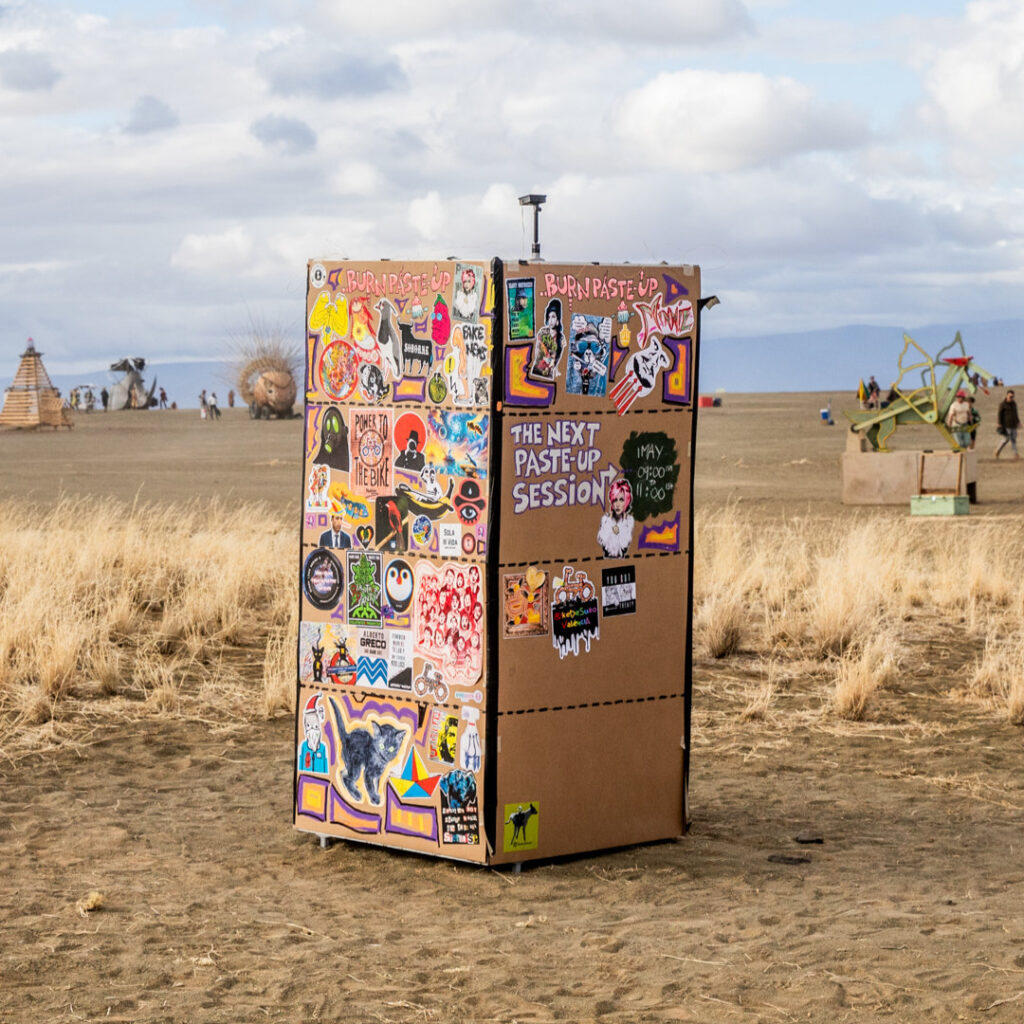
All the world’s your stage in Tankwa Town, and it’s filled with fellow performers. There is no audience, everyone’s part of the show! Stand up on a soapbox, start a conga snake, recite poetry, break into song, or perform random acts of ballroom dancing – step into the middle of nowhere and give it your best shot, break a leg, knock ’em dead!
Punk band? One man band? Riel dans groep? Skiffle player? 18-piece jazz troupe? Orchestra? Interpretive dancer? Tuvan throat singer? Maskandi? Beat poet? DJ? Great.
Just one thing: as everything in Tankwa Town is created by its citizens (that’s you), we (as AfrikaBurn) don’t book artists, or DJ’s – and all performers are all on the same level in the dust. It really makes no difference if you play in Bangkok, Berlin, Brooklyn or Bloemfontein, or how many fans you have on Soundcloud.
Because AfrikaBurn isn’t a music festival. And because it’s not a music festival
NO LINEUPS FOR OUR EVENT ARE EVER PUBLISHED.
Need a stage or space for your thing? You’ll need to hook up with another project that has what you’re after, or create it yourself.
Theme camps are often keen to collaborate with other projects – They may have the space for, and they may provide some equipment.
(We do not get involved in these arrangements.)
If you’d prefer to create and host your own shindig – Fantastic! Please go to the Information Machine and register your project.
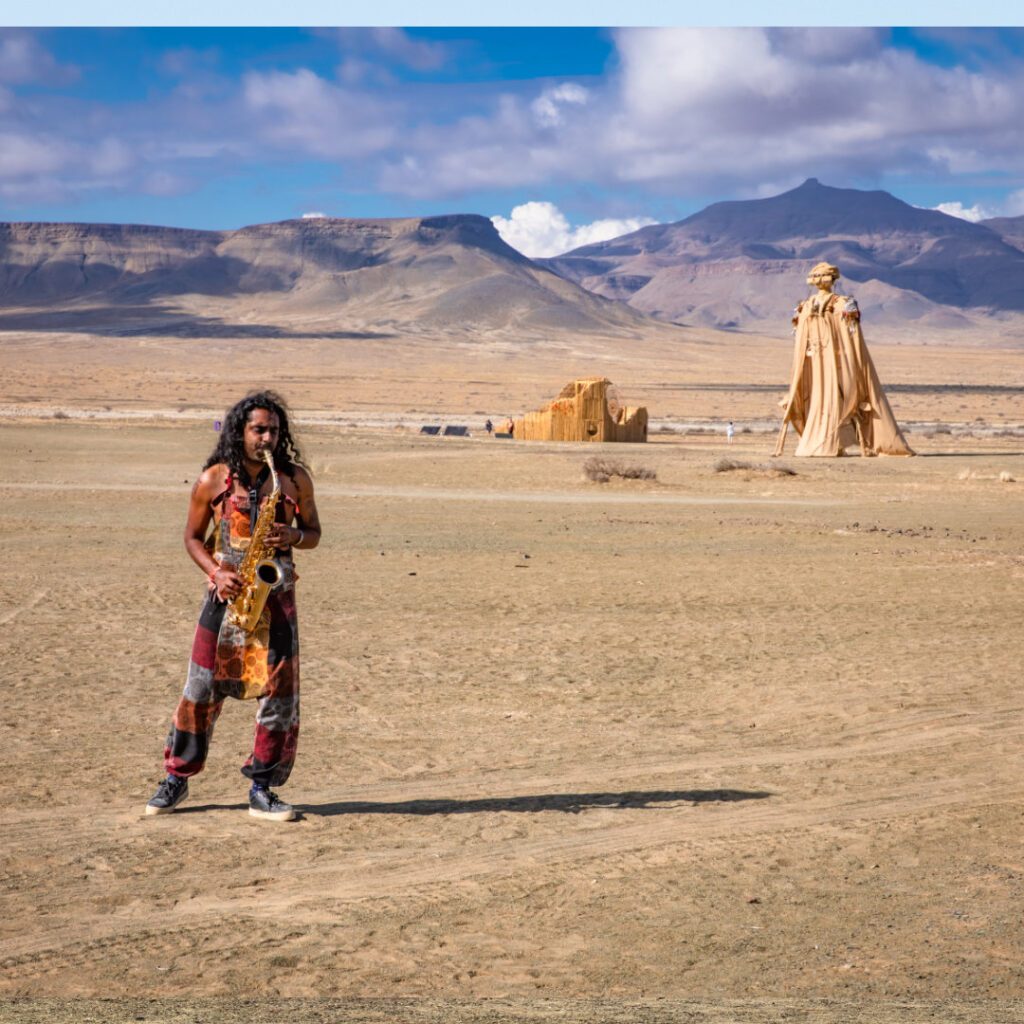
A performance is a structured creative work that is made of human movement and it is not a physical object.
Usually it’s time bound – it happens in a place for a period of time. It can be scheduled or not.
It may move or have a specific placement, but it’s usually not anchored to the ground, and rarely has a pre-placement spot on the map.
It may have a sound component or not.
It may have a fire component, but it usually does not burn down.
If a performance involves the building of a considerable physical structure that lives in the Binnekring for the duration of the event – Please register it as an Artwork.
Even though it’s just to support the performance, and might not have creative merit on its own, Physical structures do have to go through some specific parameters.
Performances (with or without physical structures) do qualify to apply for a Creative Grant.
A Binnekring Event is an event that happens in the Binnekring.
This refers to spontaneous pop-up events, or planned happenings on a day and time.
Anything that is a semi-organised thing happening in the Binnekring intentionally created, but not necessarily requiring months of preparation and rehearsals is a Binnekring Event – it’s like a performance that didn’t go to art school.
A Binnekring event might involve a physical structure, but that is temporary – it’s setup specifically for the doing of the thing and it gets removed once the activity ends.
Binnekring events are not eligible for a Creative Grant. They’re your gift, and Tankwa Town will love you for it!
We ask you to register your event, even just to make sure it’s listed in the WTF Guide event schedule, so everyone knows where to find it. Registering a Binnekring Event is very simple.
Your artwork involves a tent – please consider registering a Theme Camp instead (tents are not allowed in the Binnekring area).
Your performance involves you building a physical structure, please register an Artwork.
If that structure moves, then it would be a Roving Artwork.
Your artwork has wheels, it might be both a Roving Artwork and a Mutant Vehicle.
And other mixes not in the menu.
Just because the piece is going to AfrikaBurn doesn’t mean you have to send your artwork up in a ball of flames. We love art that burns beautifully – but we also really love art that has a life beyond Tankwa Town.
Are you thinking about burning your piece, please think about why that is – Is it important to the meaning of your piece? Is it important to you? What is the motivation for wanting to burn it? And very importantly – Is your artwork conceptualised as a burning artwork?
Building an artwork, and building a burning artwork are two very different things. If you’re intending to build a sculpture that burns remember that effectively you are building a fire that looks like a sculpture. This means that burning is an integral part of the design of your artwork.
If you decide to burn your artwork, it’s important to think about it from the start and build it into the design. If you’re not sure, we suggest that you get advice from a pyrotechnician, and If you don’t have a tame one of your own at home, you can contact us. Sooner rather than later.
Your artwork must be registered by the end of February for assessment. ArtCom and the Pyro Team will review your request based on your motivation and the design of your piece, and will let you know.
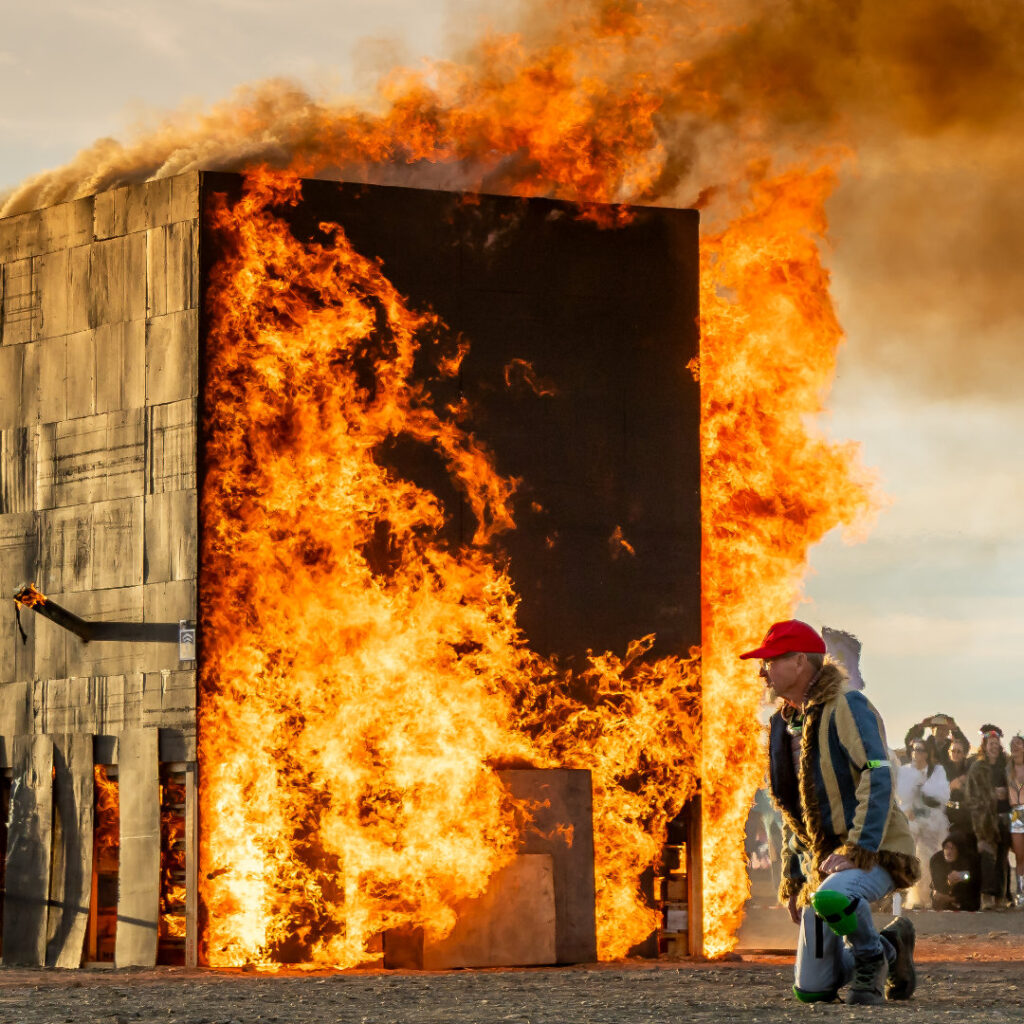
Art installations on the Binnekring may contain sound elements that might be integral to the installation, or not; those elements may be very soft, or very loud, or something else; they may be daytime sounds or not; they might not be yours too, but they might.
If the sound elements you consider integral to your piece are loud, intended for twilight hours, and permanently installed in your artwork, there’s a few things you have to do – we suggest that the first thing you do is to Reconsider.
Seriously, it’s very sound advice, start there. If it’s not ringing any bells, here’s some thinking aids you can use:
If after giving it some honest thinking, you still want to go ahead and create a party straight out of the pages of 1001 Loud-Long-Nights – Fantastic! Please carry on reading, it’s a long book!
As someone once said, “Nice things are nice when you like them!”— or so I heard from someone who heard from someone who overheard two old ladies talking on a bus in London many years ago.
If you decide to ‘sound’ your artwork, it must be registered by the end of February, and include a motivation for your artwork to have its own permanently installed sound equipment. The Art Committee and the Sound Team will assess your request.
Use light as an aesthetic element and include it in the design of your piece. Lighting your artwork is mandatory for safety reasons, but while you’re at it, why not make it in a beautiful way? When designing your artwork, don’t forget to make provision for lights, including how you’re going to make sure that your piece is lit throughout the event.
Your artwork has to be safe! It is your responsibility to make sure that the citizens of Tankwa Town are safe around your piece. Take into account the elements, the climbers and the midnight wanderers. Lighting your piece is a very important safety aspect. Please read more about Artworks Structural Safety.
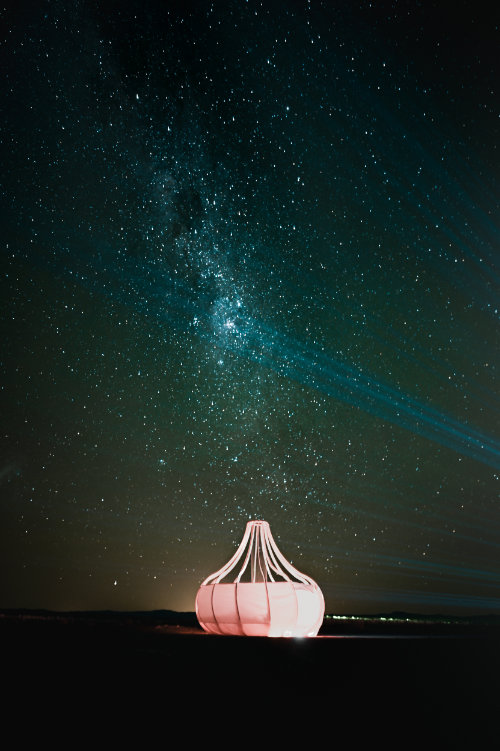
Doune Cocoon, Photo by Patrick Barylla
Registering a project doesn’t automatically (or manually, for that matter) entitle you to anything. It doesn’t grant you a free ticket to the event, nor guaranteed access to a paid one. It doesn’t provide a stage for your performance or a place to camp. It won’t give you a supplier code, early access, late departure, or storage space on site. It doesn’t entitle you to drive on site, access an ice card, the internet, power, fuel, tools, or machines. And more.
And here’s the thing … It’s not compulsory!
Registering your Art Project is not a requirement—it’s an invitation.
In any case, art registrations don’t close, so you can just arrive in the desert with your piece. And your project doesn’t need “approval” (though if it’s radically inappropriate or inherently unsafe, we’ll let you know as soon as we’re aware).
So, why register a project? You don’t have to, but you might want to…
While it’s not mandatory, we strongly recommend registering your project—because it’s useful! The registration process is designed to help you plan your project and navigate the complexities of actualising it in the desert. It also provides us with the information we need to assist in materialising your creative intentions.
Other Advantages of Registering Your Project:
While registration doesn’t automatically entitle you to anything, it does give you access to request support for your project. That is why.
Our granting process is an investment in creating the conditions for more remarkable art, and fostering opportunity in which diverse expression is originated, nurtured and celebrated. All who apply are valued, all applications are considered, and creative projects of different natures are valid and have merit of their own as a part of a fair, equitable and thriving community.
At the core, the Creative Grant funding is to cover hard costs of the project, things like materials, lighting and transport costs, for example.
The Creative Grant will NOT cover your labour at the event, performance fees, or your personal event expenses that you would ordinarily require to participate (e.g. AfrikaBurn Event Tickets, travel of the team to Tankwa Town, camping expenses like tents and food, etc.)
Of course, we do not all start from the same baseline – one size has never fitted all; and there are many ways in which art ends up actualizing in Tankwa Town. So we will be asking some probing questions to help us understand where your project fits in our funding landscape, which aims to foster a sense of belonging, not othering.
The AfrikaBurn Creative Grant process speaks to our emerging strategy through supporting (South) African participation as a systemic approach towards a diverse community and creative expression, and upholds the Principle of Radical Inclusion in the South-African social context
Everyone should be able to be a part of AfrikaBurn. As an intentional community committed to inventing the world anew, we actively pursue mechanisms to address imbalances and overcome barriers to participation, especially in light of past, current and systemic injustice.
Grants open in the beginning of September and close late in October.
If you submit your grant application nice and early, we’ll be able to look at it in advance and assist you with anything that might be needed, or that we think might make for a better application.
If you do it at the last minute, we might not be able to give you the help you need. If our systems go down, or you have technical difficulties; if your application is missing crucial information, or is the wrong format; etc. etc. – if we don’t give us time to help, we won’t.
Grant Assessment happens in November, if you apply for a grant please make sure that you are contactable during this time.
Early November: If you apply for a grant, you have to come and assess grants – The Grant Open Assessment is usually during 3 days over the first or second weekend of November.
ArtCom will be assessing grants for the whole of November, and it is likely that we have got questions and considerations for you during the Selection Phase (mid November). Please keep an eye out for any comms from us, and respond as soon as you can.
At the end of November, we’ll be communicating the outcomes. If you were awarded a grant, you will need to respond to our email to accept it (or not).
If you do accept the grant, we’ll need to move onto contracts and payments fast. Ideally, by mid December all contracts are signed and many are paid.
If we miss that window then only from mid January again.
In January, you will be required to submit the detailed and updated information about your project, as you are committing to do it. If there are significant changes, these need to be approved by ArtCom.
Funded projects need to be up and running on the first day of the Event. If circumstances change your grant needs to be reassessed.
It is your responsibility to make sure that you and your team have tickets, transport, tents, and whatnot ahead of the event in order to assure that your piece will be ready on the first day.
Keep your slips and your ledger – You’ll be required to submit a reconciliation of your grant by the end of May
Tools, equipment, other assets, and anything that can be used in another project in the future, bought with the grant money are AfrikaBurn’s, and we will ask you for it at the end of your project.
The grant application process is a long and detailed one—you can’t rush through it. Once you start filling it in, we don’t recommend stopping and resuming later. Unexpected events can happen, and we want to help you minimise the chances of any mishaps. To ensure a smooth application, we suggest downloading the form preview below and preparing all your answers in advance.
Pay special attention to the Budget Template—download it here, fill it in, and have it ready to upload with your grant application.
Grant Applications are assessed on their individual merit, first anonymously and then comparatively against other submissions using a simple scoring system.
All applications are displayed gallery-style in Cape Town, and in Johannesburg, and are open to be viewed and assessed by members of the community. This is mandatory for Current Grant Applicants and members of ArtCom.
Points are allocated to each project using an Assessment Sheet. (If applicants have more than one representative assessing, they must complete one assessment sheet together.)
Four themes guide the evaluation of grant projects:
All Creative Grant applicants, including those from previous years, along with ArtCom, participate in the OPEN ASSESSMENT phase.
At the end of the Open Assessment period, scores are tallied, and ArtCom proceeds to the next phase.
Under this theme we consider whether the proposal is plainly funny, clever, beautiful, whimsical, interactive, new to Tankwa Town.
Under this theme we consider whether the proposal has considered its interaction and potential to engage audiences interactively at Tankwa Town.
Under this theme we consider whether the proposal shows a wider reach beyond the lifespan of the actual event in Tankwa Town.
This phase is made of two steps: Selection and Allocation; and Only ArtCom Members participate.
4. Chances of Success
At this stage, applicants’ names are revealed. The focus shifts to evaluating the feasibility of the project. Under this theme we consider how likely the team is to successfully build what they have proposed. Previous successful track records at AfrikaBurn and other projects are considered. We look at the diversity of skills present in the team and if these align with the proposal
The scores from this phase are combined with those from the previous phase to give a final numeric score. These scores serve as a guideline and are not the absolute deciding factor.
It’s important to remember that art at AfrikaBurn is not art in the classic sense. These projects represent communal effort, radical expression, and many other values. It’s not just about their appearance but also what they do.
The grant assessment process takes all factors into account.
ArtCom members, who applied for a Creative Grant and/or are closely related to an applicant, are excluded from the fund allocation phase.
Discussion and Final Selection: ArtCom discusses all projects in depth to create a final list. Detailed feedback is compiled and shared with the applicants via email.
Budget Review: Cost breakdowns of shortlisted projects are rigorously assessed, and funds are provisionally allocated. This may involve reducing the number of awarded projects or adjusting the award amounts.
All applicants are informed of their results, including feedback from the Art Committee. ArtCom reaches out to unsuccessful applicants to explore other ways to support their projects.
Temple & Clan
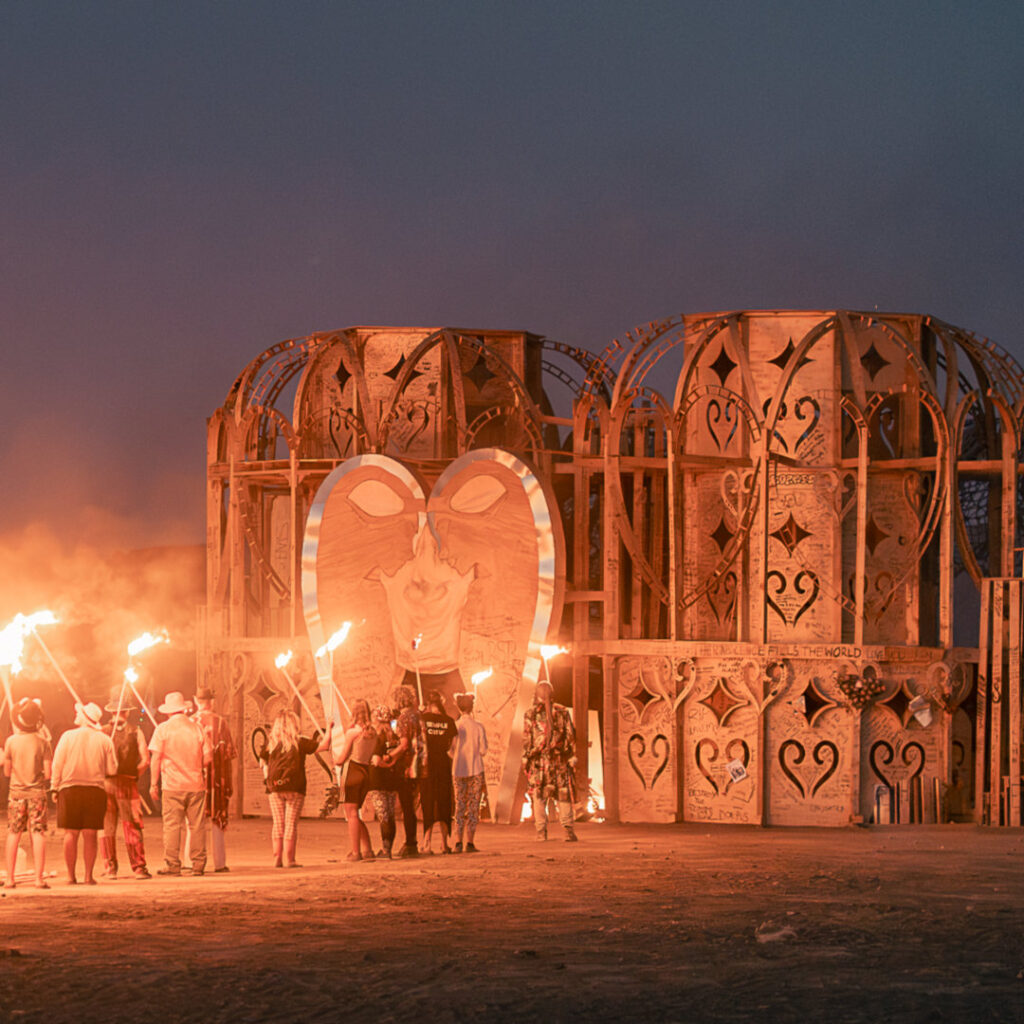
The Temple has developed as a part of AfrikaBurn’s physical and emotional landscape as a space of contemplation and reflection. The temple is intended as an area of sanctuary, a site of calm on the edge of the chaos and cacophony of Tankwa Town. A space to spend time with one’s own thoughts, reflect on one’s life, the lives of others, those recently passed, ancestors.
The Temple should inspire us and stimulate our spiritual awareness of nature and cosmos. While the structure may be a thing of beauty, its significance is in its transience. It is a place of letting go, a place of release. It is the pinnacle of our celebration of immediacy and catharsis.
The Temple is a commissioned artwork, carrying the opportunity and responsibility to be an agent of transformation, and as such comes with support of additional inputs for the build crew.
The Temple is a tool for development and legacy, and it’s our mission to make sure that the values it portrays are relevant in the world, and specifically in the South-African context.
If you’re interested please read the Temple Guidelines, then draft your Temple proposal and send it to temple@afrikaburn.com.
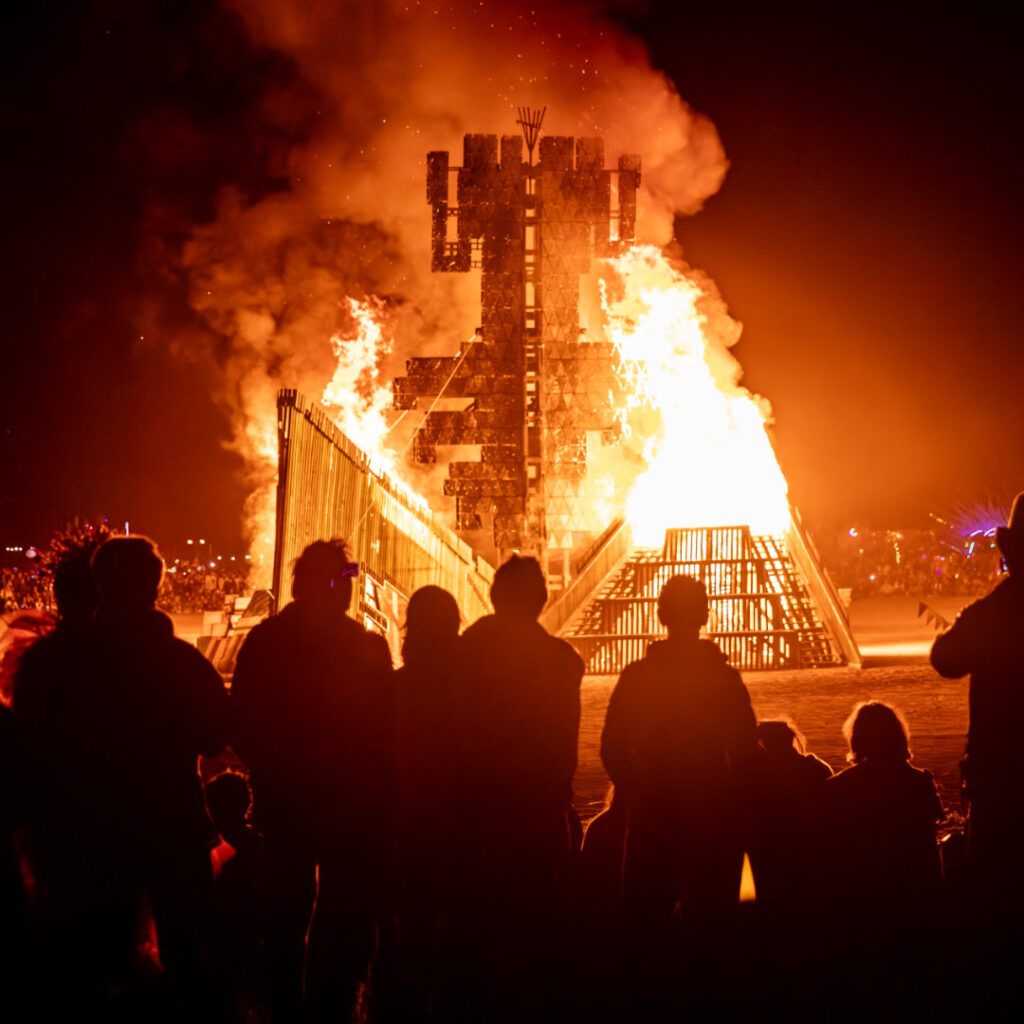
The Clan is a sculptural representation of a San rock painting which we understand to represent unity of intent and is the chosen central effigy at the annual AfrikaBurn event.
It is a vital part of our creative infrastructure — and it’s important that it matches the strategic pathway of AfrikaBurn, an ever-evolving work in creating the world anew.
The Clan is a commissioned artwork, carrying the opportunity and responsibility to be an agent of transformation, and as such comes with support of additional inputs for the build crew.
The Clan is a tool for development and legacy, and it’s our mission to make sure that the values it portrays are relevant in the world, and specifically in the South-African context.
As the icon of AfrikaBurn’s identity since its first event in 2007, it stands as a uniquely South African symbol as a recognisable San figure.
But where did it come from, what does it mean – and why and how did AfrikaBurn come to choose it as the icon that represents its identity?
Please read the History of The Clan
Since inception, the Clan project has been championed and interpreted by different artists each year, which has created a diversity of experience and expression.
If you’re interested please read the Clan Guidelines, then draft your Clan proposal and send it to clan@afrikaburn.com.

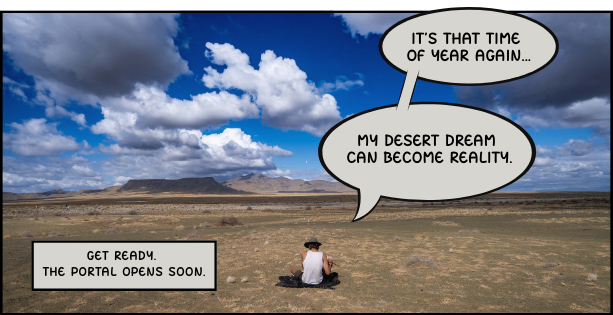
Hey there, Dreamers! Registrations and grant applications are (almost) ready
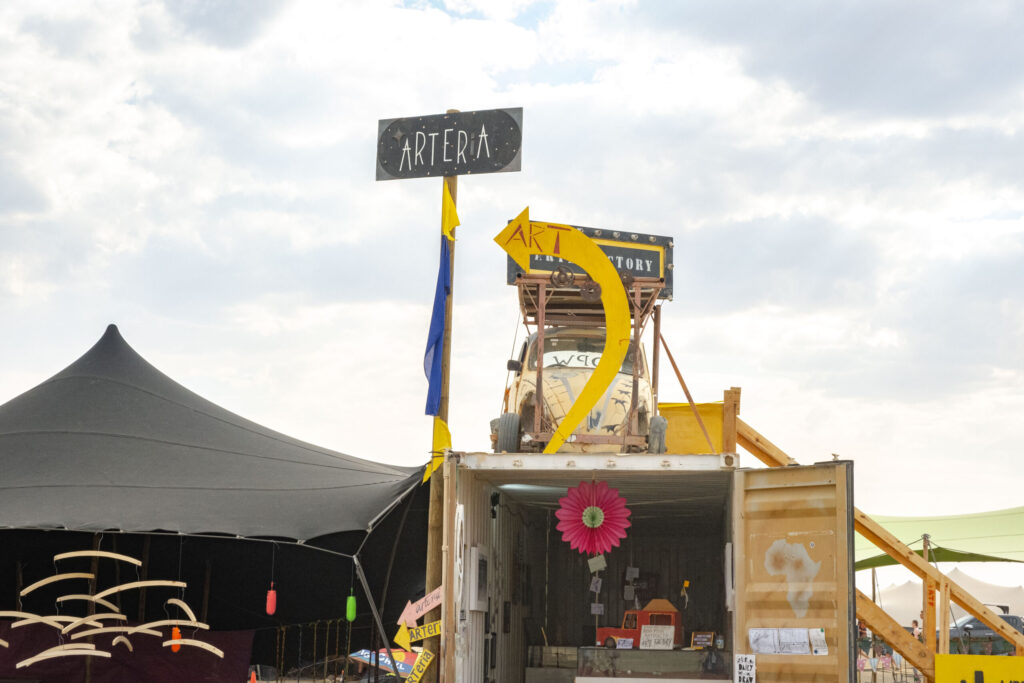
The AfrikaBurn Art Portfolio is looking for a full-time Art Administrator.
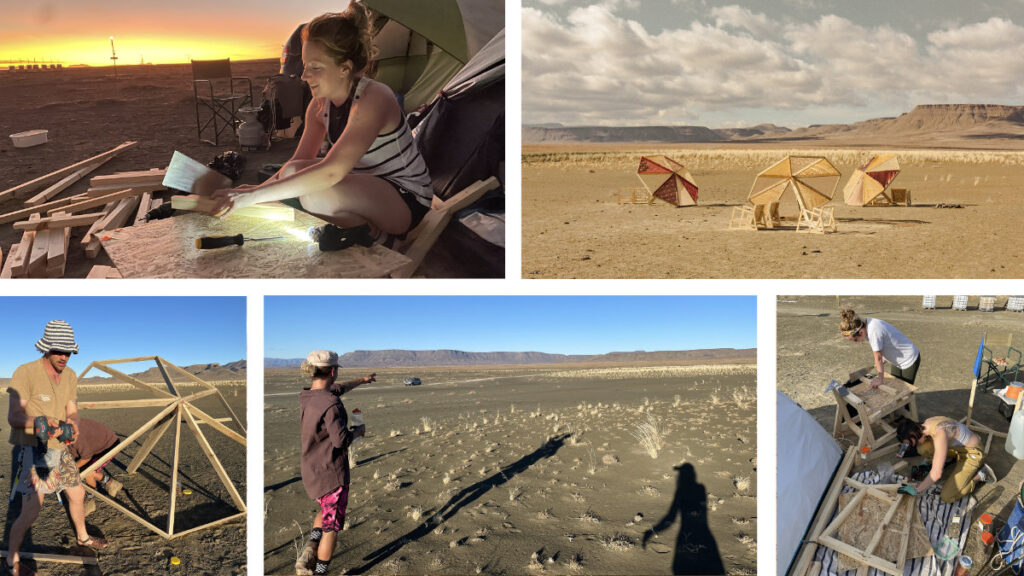
People often assume you’re “chosen to create art”. But AfrikaBurn doesn’t “select” artists, it invites participation. Everyone, from all backgrounds, is welcome to co-create with no permission slip needed.